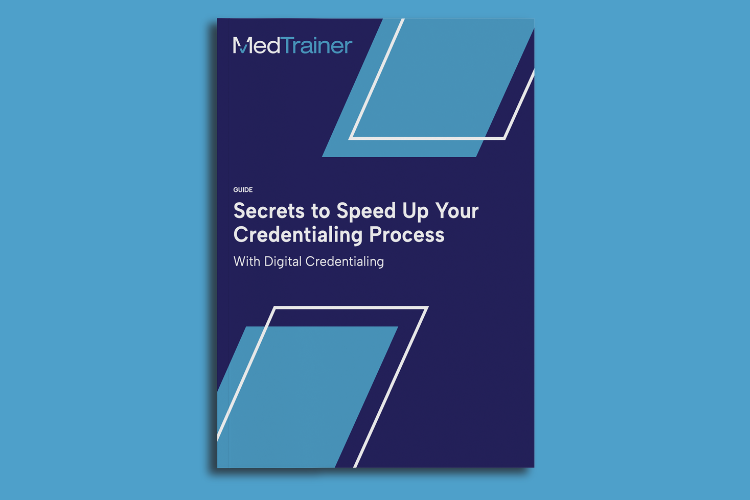Physician credentialing is a necessary step for medical professionals before becoming providers. In order to actually provide services to patients, one must be credentialed to prove that they’re competent. It is a meticulous process where insurance companies and healthcare organizations validate the qualifications, experience, and competencies of doctors to ensure that they meet stringent industry standards.
This process not only underscores a physician’s credentials but also serves as a safeguard for patient safety and quality care. In this post, we’ll unravel the intricacies of physician credentialing so you can chart your path towards successful physician credentialing.
What Is Provider Credentialing?
Physician credentialing, also known as provider credentialing, can mean different things depending on the role of the person using the term and its context. Something to be aware of is that provider credentialing and provider enrollment are often confused. Let’s break down what each term actually means.
Provider Credentialing
Provider credentialing is a critical process in healthcare. It involves verifying the qualifications, experience, and professional standing of medical practitioners. This rigorous process is required before a physician can be approved to provide care within a healthcare organization or to be reimbursed by insurance companies.
Provider Enrollment
Provider enrollment, commonly known as payer enrollment, is the subsequent step after credentialing, where another intensive review is conducted by a commercial insurance company, Medicare, or Medicaid. When this step is completed, the physician is recognized within insurers’ networks as an eligible provider for service coverage.
What Are the Biggest Challenges in Provider Credentialing and Enrollment?
Provider credentialing and payer enrollments present a unique set of challenges. Below are some of the biggest and most common pains professional credentialers endure:
Extensive Documentation: Gathering and verifying a wide array of documents can be a meticulous and labor-intensive task.
Data Accuracy: Any inaccuracies in the documentation can lead to delays or denials in the credentialing process.
Lengthy Verification Process: Credentialing involves a detailed primary source verification process that can be time-consuming.
Exclusions Monitoring: Regular checks of OIG-LEIE, SAM, and state exclusionary databases is essential for ensuring providers are qualified to practice.
Varying Payer Requirements: Insurance companies have different criteria and processes, making it hard to standardize applications.
Enrollment Timeframes: Payer enrollments can take several months, during which providers may be unable to serve certain patients.
Changing Regulations: Staying up to date and compliant with evolving healthcare regulations adds another layer of complexity to credentialing.
Administrative Burden: The administrative workload can be significant without a dedicated staff or system.
Keeping Track: Managing and tracking the status of multiple applications simultaneously requires exceptional organizational skills.
Recredentialing: Provider credentials must be updated regularly, which involves repeating the rigorous process.
Tips To Make the Credentialing Process Faster
There are no shortcuts in credentialing, but a standard, efficient process will eliminate many common delays. Here are some ideas.
Get secrets to speed up your credentialing process.
Automate Exclusions Monitoring
Leverage technology and take advantage of automated exclusions monitoring. Manually checking various databases (OIG-LEIE, SAM, state-specific) is tedious, time-consuming, and leaves room for human error. If a provider is listed on an exclusions list but continues to work, the organization can face citations, fines, and even legal action.
Use a Checklist
Track each of your requests and receipt of demographic information and documents using a detailed checklist customized by specialty and payer. This will ensure you don’t miss any important information that needs to be submitted. Missing information on enrollment applications will delay the process.
Begin Gathering Information ASAP
Reach out to providers as soon as they are hired to start the credentialing and enrollment process. With credentialing software, it is easy to send an email to providers with a secure link to upload their documents so you can get the information more quickly.
Follow Up Consistently (with both providers and payers)
Don’t hesitate to follow up with providers if you don’t have all needed documents. Their first priority is patient care, and it’s up to you to remind them that they can’t care for patients unless you have everything you need. You will also need to follow up with payers, starting three days after submitting the application.
Eliminate Chances of Human Error
Automation and integrations not only eliminate the chances of human error, but help to complete credentialing more quickly. Manual data entry inevitably leads to mistakes, oversight, and missed deadlines. However, automations do the dirty work for you, and integrations reduce redundancy.
Double-Check for Common Pitfalls
Some of the most common pitfalls are providing an incomplete work history (failing to explain lapses of more than 30 days), providing less than three references, and missing proof of practice. Ensuring that every document is complete, accurate, and up to date before submission can prevent unnecessary slowdowns.
Have a Plan for Next Steps
You’ll want to document and date each step of the process. If an enrollment application is approved, store the approval letter and document the date. If an application is denied, first identify the reason for denial, then a new timeframe to resubmit and ensure the second application has up-to-date documents. If an application is rejected, identify the reason and have a business plan in place for confidentiality, if/how the provider will be notified, and how the staffing gap will be filled.
Rely on Physician Credentialing and Enrollment Services
Physician credentialing and enrollment services specialize in handling the complexities of the credentialing process. By outsourcing to these experts, providers can save time and reduce the hassle of navigating the intricate requirements of various insurance panels.
Your North Star: Software and Credentialing Specialists for Physicians
The credentialing voyage, while complex, is navigable with the right tools and partners. Software solutions and credentialing specialists represent a guiding North Star for healthcare organization, illuminating the path to successful credentialing. Whether your team of in-house credentialing specialists leverage software to stay organized or you outsource to a fully-managed service, you can ensure that your facility is recognized as credible with competent practitioners, ready to deliver quality care to patients.

